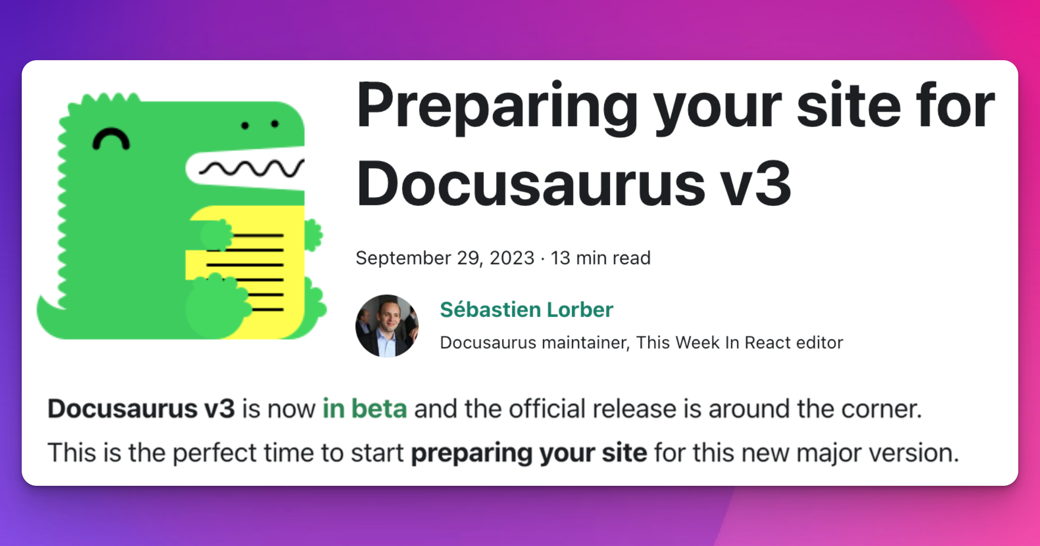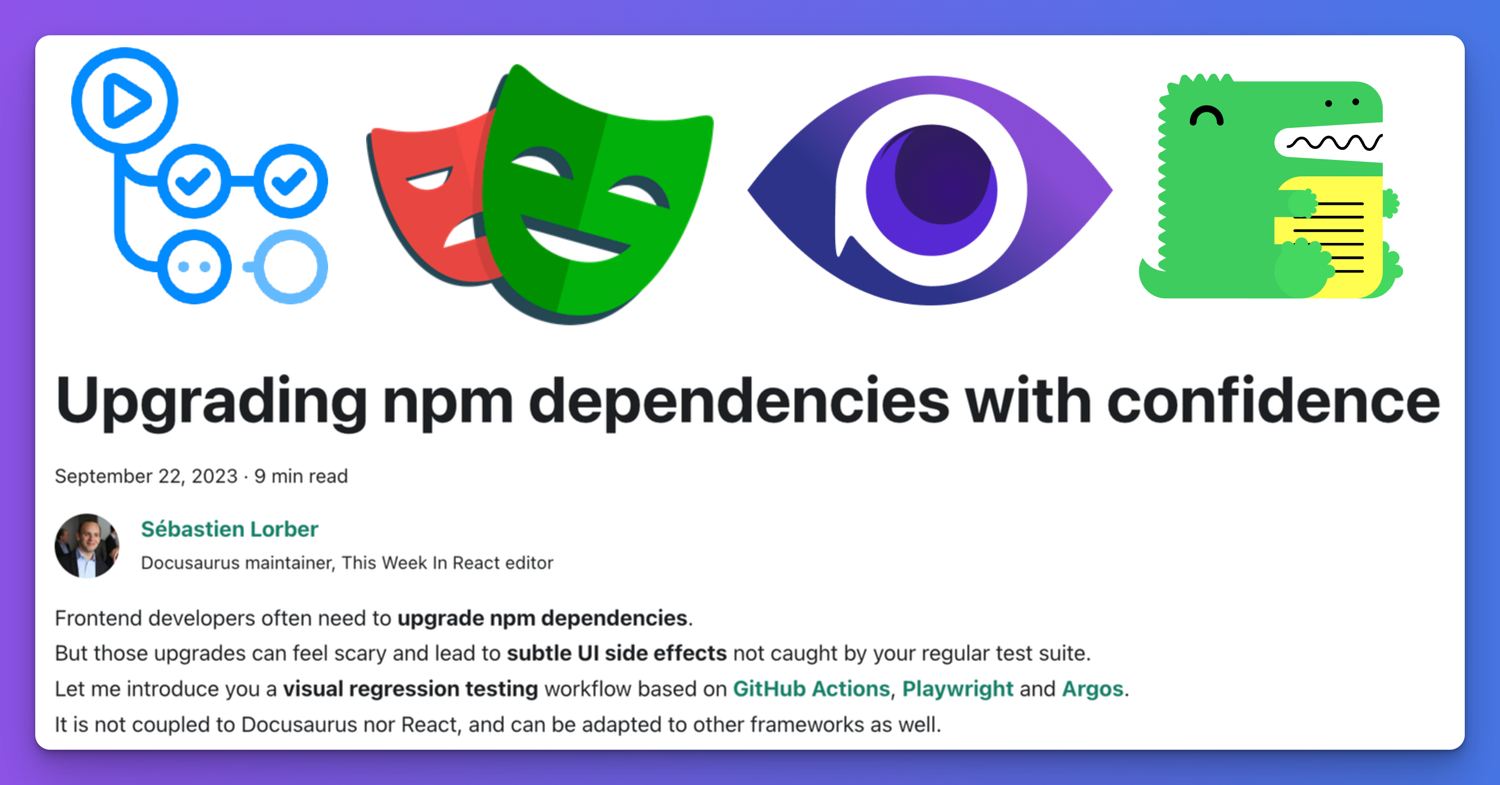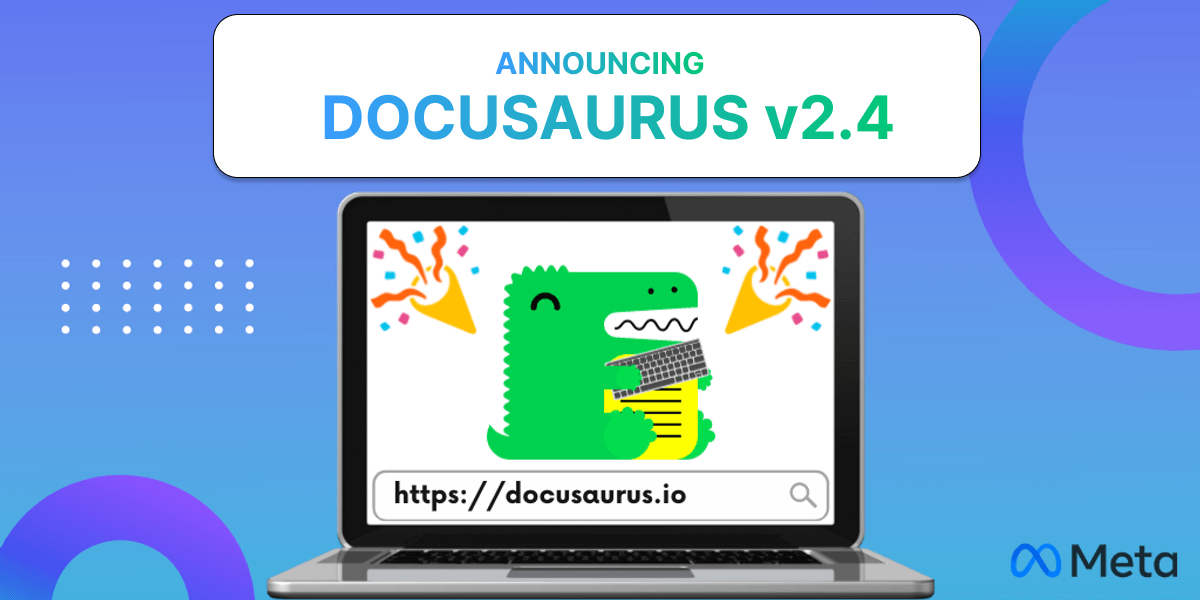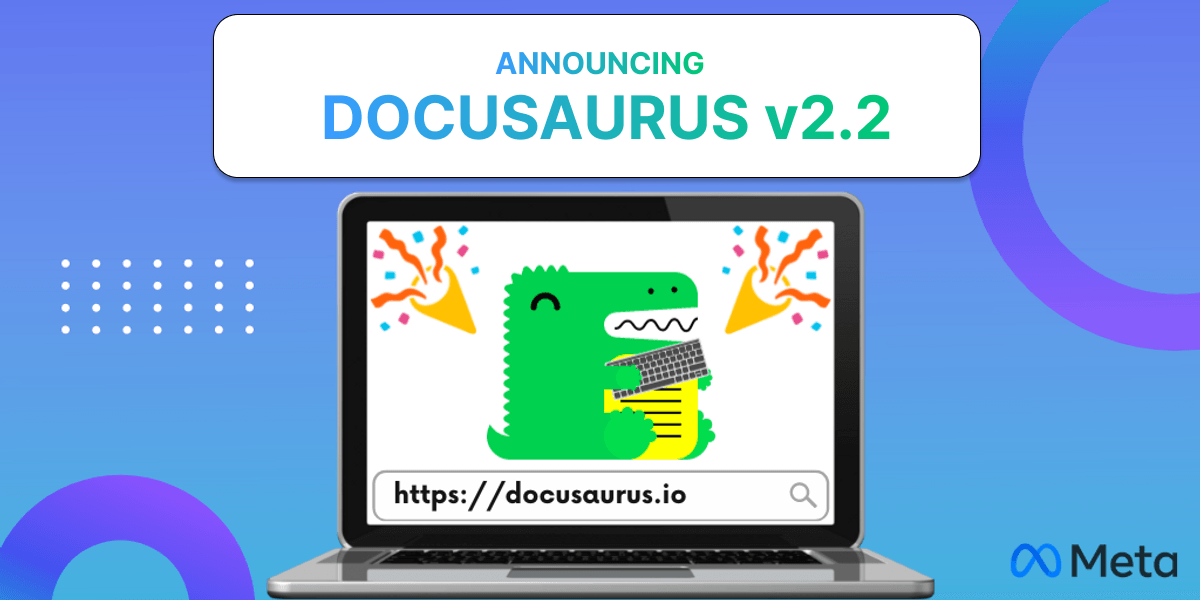Preparing your site for Docusaurus v3
这篇博文是在 Docusaurus v3 还处于测试时写的。 在升级到 Docusaurus v3 当前稳定版本时,请留意依赖项版本的变更以及相应的升级步骤。 请使用升级指南了解最新的迁移步骤。
Docusaurus v3 is now in beta and the official release is around the corner. This is the perfect time to start preparing your site for this new major version.
Docusaurus v3 comes with a few breaking changes, many of which can be handled today under Docusaurus v2. Preparing your site ahead of time can be done incrementally, and will make it easier to upgrade to v3.
主要的突破变化是从 MDX v1 升级到 MDX v3 。 请阅读 MDX v2 和 MDX v3 的版本说明获取更详细的信息。 MDX will now compile your Markdown content more strictly and with subtle differences.
This article will mostly focus on how to prepare your content for this new MDX version, and will also list a few other breaking changes that you can handle today.





